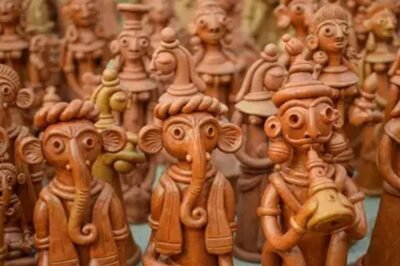The traditional pottery of Assam is a beautiful reflection of the state’s rich cultural heritage, deeply rooted in the craftsmanship of the Kumhar community. For generations, the Kumhars have shaped the history of Assam pottery art, creating delicate yet functional earthenware that has served both practical and ritualistic purposes. However, in today’s rapidly modernizing world, this age-old craft is slowly fading into obscurity, raising concerns about the loss of a significant part of the cultural heritage of Assam.
The Kumhar Community: Guardians of Assamese Pottery
The Kumhar community in Assam has long been synonymous with pottery-making, a craft passed down from one generation to the next. Traditionally, Kumhars used local clay to create a variety of handmade pottery, from household items such as cooking vessels, pots, and water storage containers to ceremonial and decorative pieces used in festivals and religious rituals. The skills and techniques employed by these artisans have remained largely unchanged over centuries, highlighting their deep connection to Assam’s cultural history.
While the Kumhar community has been the backbone of Assamese ceramics, they are now facing challenges in sustaining this art form due to increasing competition from industrially produced goods. The growing preference for metal and plastic alternatives has further contributed to the decline of this ancient craft.
Crafting Assamese Ceramics: A Time-Honored Tradition
The process of creating traditional pottery of Assam begins with sourcing the right type of clay, which is carefully selected from riverbanks or paddy fields. The clay is then kneaded and shaped by hand or using a wheel to create the desired forms. The most common items include earthen lamps, clay idols, and diyas, which hold cultural and religious significance in Assamese households.
Unlike many other pottery traditions, Assamese pottery is often left unglazed, giving it a natural, earthy appearance. The pieces are fired in open kilns, a method that requires precision to avoid cracks or imperfections. This technique has been perfected by the Kumhar community, who know the exact balance of heat and timing required to produce durable, beautiful ceramics.
The Decline of Handmade Pottery in Assam
The advent of mass-produced goods has led to a significant decline in the demand for handmade pottery. Cheaper and more durable alternatives, such as plastic and stainless steel, have flooded the market, making it difficult for traditional artisans to compete. As a result, many potters from the Kumhar community are leaving their ancestral craft to pursue other forms of livelihood, threatening the survival of this ancient art form.
Efforts are being made to revive Assam pottery art, including workshops, government initiatives, and exhibitions that showcase the beauty and functionality of these handmade creations. However, without sustained support and interest from both local communities and tourists, the future of Assamese pottery remains uncertain.
Preserving the Cultural Heritage of Assam
The cultural heritage of Assam is deeply intertwined with its traditional crafts, and pottery is one of the most significant art forms in this regard. To preserve this unique aspect of Assamese culture, there must be a conscious effort to promote the importance of traditional pottery of Assam. Supporting local artisans, creating more platforms for their work, and encouraging younger generations to learn the craft are key steps in ensuring that the legacy of the Kumhar community continues for years to come.
Conclusion: A Call to Protect Assam’s Pottery Legacy
The traditional pottery of Assam is not just a craft; it is a living testimony to the region’s rich history and the skilled artisans of the Kumhar community. As this precious art form faces extinction, it is crucial to recognize its value and take collective action to protect it. By reviving interest in Assamese ceramics and supporting local potters, we can ensure that this timeless craft remains a vibrant part of Assam’s cultural landscape.








Leave a Reply